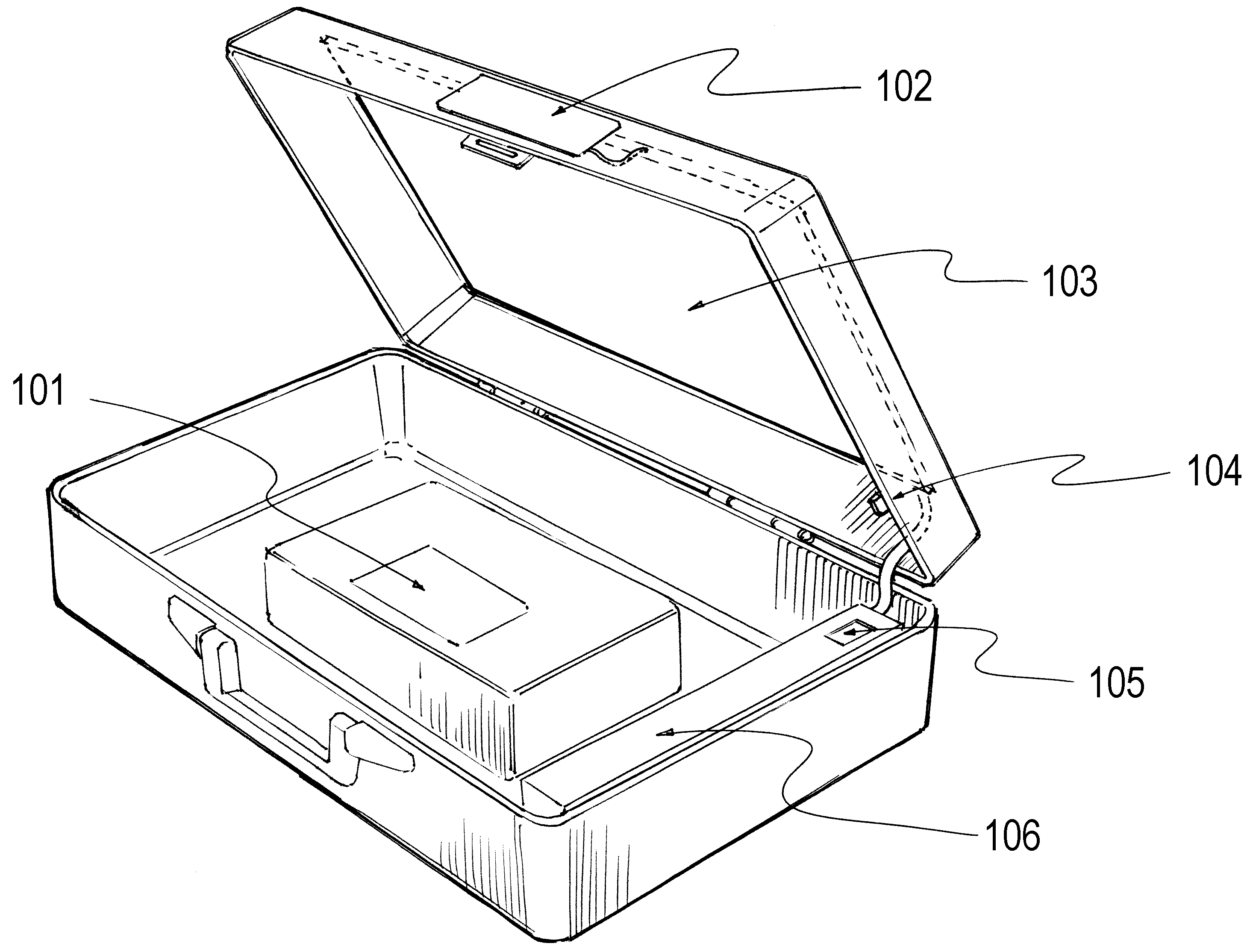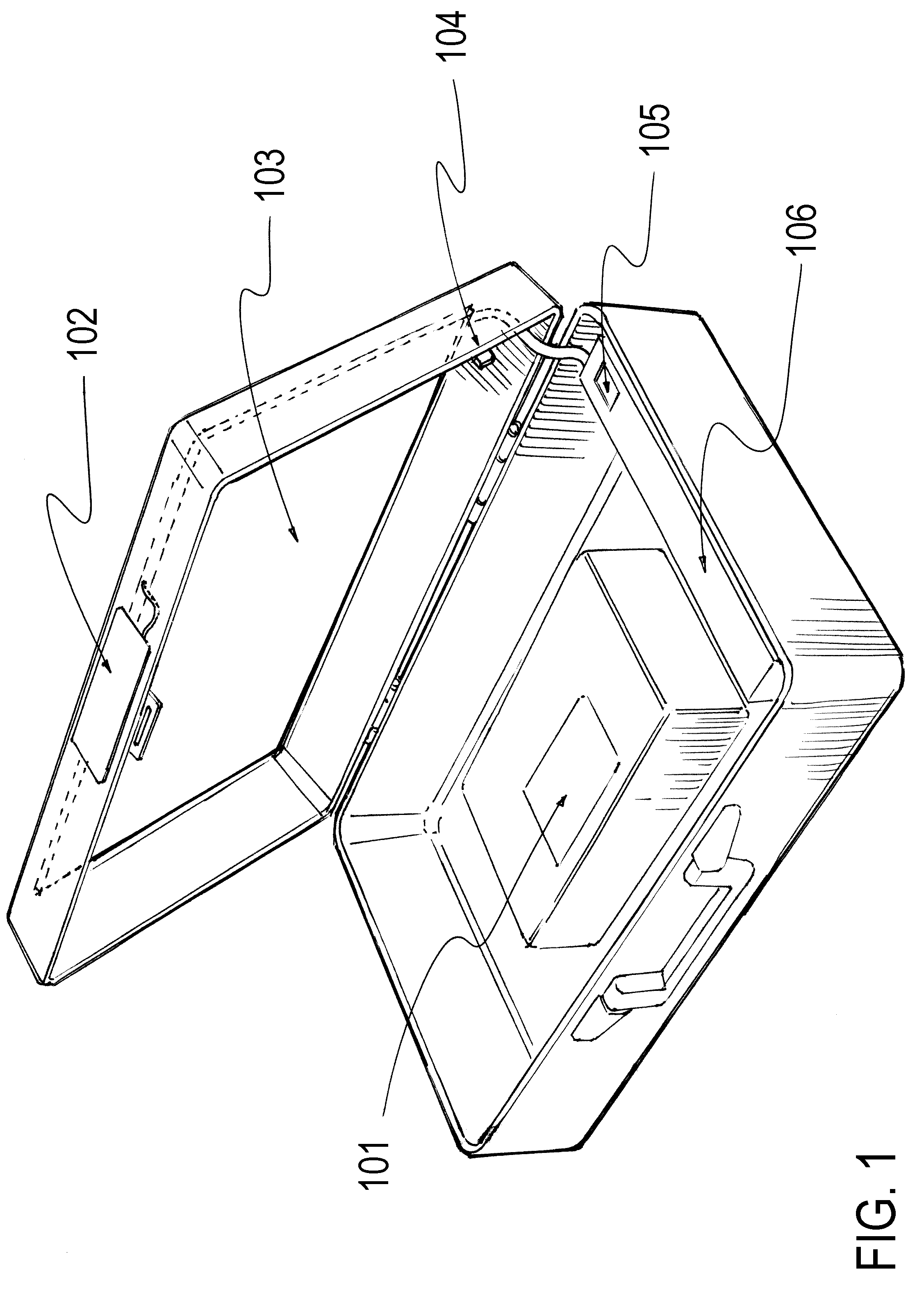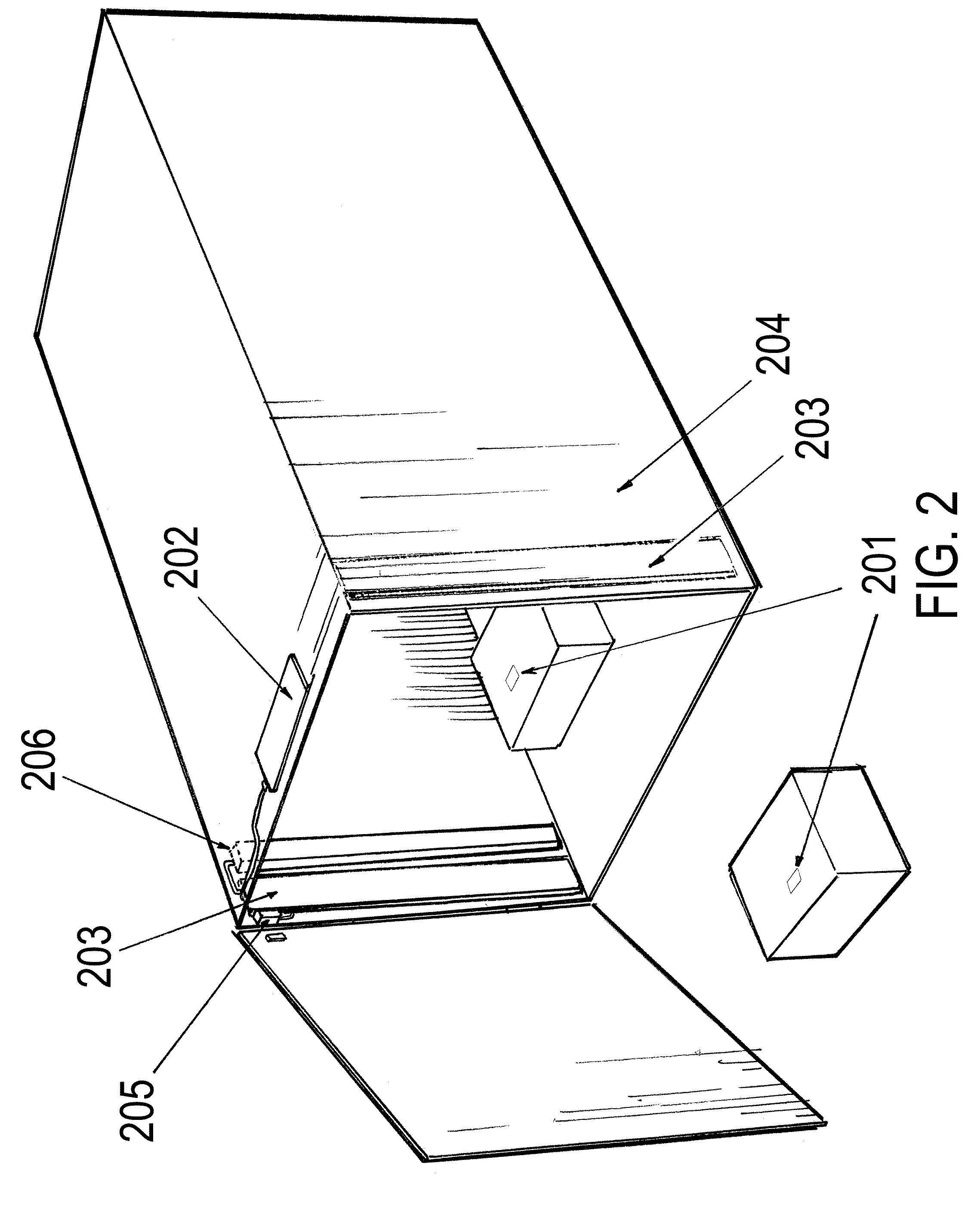Remote identification of container contents by means of multiple radio frequency identification systems
a radio frequency identification and remote identification technology, applied in the field of remote identification of container contents by means of multiple radio frequency identification systems, can solve the problems of less expensive rfid systems with lesser capabilities, limited range, low cost per unit, etc., and achieves less shielding, less shielding, and significant storage power
- Summary
- Abstract
- Description
- Claims
- Application Information
AI Technical Summary
Benefits of technology
Problems solved by technology
Method used
Image
Examples
Embodiment Construction
[0018]The following detailed description of embodiments of this invention and the attached figures are intended to provide a clear description of the invention without limiting its scope.
[0019]FIG. 1 is a diagram illustrating an embodiment of the invention, incorporated in an attache case. The RF tag 101 is attached to an object or objects within the attache case. In this embodiment, the RF tag 101 is a passive tag operating at 125 kHz, 13.56 MHz, or 900 MHz. The shape of the objects within the attache, the shape of the attache, and the orientations of the RF tags with respect to the objects and the interrogator / interrogator antenna 103 ensure that the rate of successful read operations performed by the interrogator upon the interior objects is optimal. In an alternate embodiment, compartments or dividers or multiple interrogators might perform the same function for containers and objects of different geometries. Externally accessible RF tag 102 is an active or semi-passive tag that...
PUM
 Login to View More
Login to View More Abstract
Description
Claims
Application Information
 Login to View More
Login to View More - R&D
- Intellectual Property
- Life Sciences
- Materials
- Tech Scout
- Unparalleled Data Quality
- Higher Quality Content
- 60% Fewer Hallucinations
Browse by: Latest US Patents, China's latest patents, Technical Efficacy Thesaurus, Application Domain, Technology Topic, Popular Technical Reports.
© 2025 PatSnap. All rights reserved.Legal|Privacy policy|Modern Slavery Act Transparency Statement|Sitemap|About US| Contact US: help@patsnap.com



